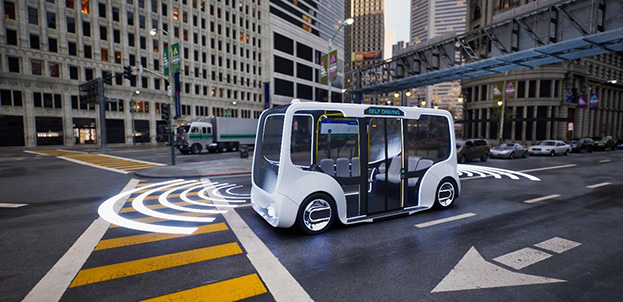
Matthew Stridiron, who works on vehicle software and data-driven technologies, explains that in recent years, the transportation sector has witnessed a paradigm shift with the advent of autonomous vehicles (AVs). These self-driving technologies will transform public transportation by resolving issues facing current systems in urban and rural environments. Matthew Stridiron also notes that they will reduce traffic congestion and road accidents.
The Current State of Public Transportation
Public transportation systems worldwide face numerous challenges, including congestion, high operational costs, inconsistent service quality, and limited accessibility for people with disabilities. Matthew Stridiron explains that traditional mass transit systems are often burdened by outdated infrastructure and technologies, leading to frequent delays and reduced user satisfaction. Additionally, the COVID-19 pandemic has further strained public transport, highlighting the need for innovation and resilience in this critical sector.
The Emergence of Autonomous Vehicles
Autonomous vehicles, equipped with advanced sensors, machine learning algorithms, and real-time data processing capabilities, offer a promising solution to many of these issues. Companies like Waymo, Tesla, and Uber are at the forefront of developing AV technology, with numerous pilot projects and deployments already underway. Matthew Stridiron adds that these vehicles can operate without human intervention, relying on sophisticated software to navigate roads, interpret traffic signals, and avoid obstacles.
Efficiency and Cost Reduction
One of the most significant advantages of autonomous vehicles in public transport is their potential to improve efficiency and reduce costs. AVs can operate continuously without the need for breaks, reducing downtime and increasing the frequency of service. This continuous operation can lead to more reliable and predictable schedules, attracting more drivers to autonomous public transit.
Furthermore, autonomous buses and shuttles can optimize routes in real-time based on traffic conditions, reducing travel time and fuel consumption. Matthew Stridiron emphasizes that, by eliminating the need for drivers, public transportation agencies can significantly cut labor costs that constitute a substantial portion of operational expenses. These savings can be reinvested into maintaining and upgrading infrastructure which undoubtedly enhance the quality of life for everyone.
Enhanced Accessibility
Accessibility is a critical concern in public transportation, particularly for individuals with disabilities, the elderly, and those living in underserved areas. Autonomous vehicles can significantly improve accessibility by providing on-demand, door-to-door service. AVs can be equipped with features such as ramps, automated announcements, and customized seating arrangements to accommodate passengers with special needs.
In rural and suburban areas where traditional public transport is often sparse or nonexistent, autonomous shuttles can provide a viable alternative. These smaller, flexible vehicles can operate on-demand, reducing wait times and offering a more personalized service. This flexibility can help bridge the gap between urban and rural transportation, ensuring that everyone has access to reliable and efficient transit options.
Environmental Benefits
The environmental impact of transportation is a growing concern, with vehicles being a major contributor to air pollution and greenhouse gas emissions. Autonomous vehicles, particularly electric ones, can play a pivotal role in reducing the carbon footprint of public transportation. Matthew Stridiron indicates that optimizing AV routes and driving patterns can minimize energy consumption and emissions.
Matthew Stridiron states that the integration of autonomous vehicles into public transport can encourage a shift away from private car ownership. This reduction in the number of privately owned vehicles can alleviate traffic congestion, decrease pollution, and promote more sustainable urban development. Autonomous buses and shuttles can also be integrated with other green technologies, such as solar panels and energy-efficient infrastructure, to further enhance their environmental benefits.
Safety Improvements
Safety is a paramount concern in transportation, and autonomous vehicles have the potential to significantly reduce accidents and improve overall safety. Human error is a leading cause of traffic accidents, and AVs are designed to eliminate this risk by adhering strictly to traffic rules and continuously monitoring their surroundings. Advanced safety features, such as collision avoidance systems and automatic emergency braking, can further enhance the safety of autonomous public transport.
Additionally, the data collected by AVs can be used to improve traffic management and infrastructure planning. Matthew Stridiron emphasizes that city planners can identify high-risk areas to implement measures and enhance safety for all road users.
Challenges and Considerations
Matthew Stridiron understands that despite the promising potential of autonomous vehicles in public transport, several challenges and considerations must be addressed. Regulatory frameworks need to be developed and standardized to ensure the safe and effective deployment of AVs. Public acceptance and trust in autonomous technology are also crucial, requiring extensive transparent communication about the benefits and limitations of AVs.
Infrastructure upgrades, such as dedicated lanes and smart traffic signals, are necessary to support the seamless operation of autonomous vehicles. Cybersecurity is another critical concern, as AVs rely heavily on data and connectivity, making them potential targets for cyberattacks. Robust security measures must be implemented to protect both the vehicles and the data they collect.
Autonomous vehicles have the potential to completely change public transportation. Matthew Stridiron concludes that addressing the challenges and leveraging the benefits of AV in transit agencies can create a more resilient and inclusive transportation system. As autonomous buses, shuttles, and taxis become more prevalent, they will play a crucial role in shaping the future of urban mobility.
 Matthew Stridiron, who works on vehicle software and data-driven technologies, explains that in recent years, the transportation sector has witnessed a paradigm shift with the advent of autonomous vehicles (AVs). These self-driving technologies will transform public transportation by resolving issues facing current systems in urban and rural environments. Matthew Stridiron also notes that they will reduce traffic congestion and road accidents.
Matthew Stridiron, who works on vehicle software and data-driven technologies, explains that in recent years, the transportation sector has witnessed a paradigm shift with the advent of autonomous vehicles (AVs). These self-driving technologies will transform public transportation by resolving issues facing current systems in urban and rural environments. Matthew Stridiron also notes that they will reduce traffic congestion and road accidents.